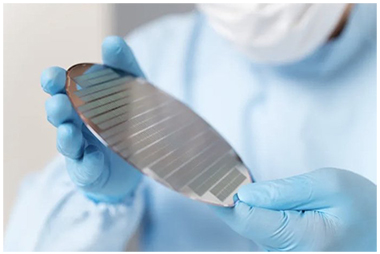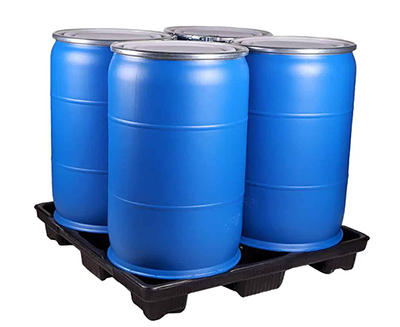Blog - Aure Chemical
Key Parameters for Procuring Dimethyl Sulfoxide (DMSO) Raw Materials
Dimethyl sulfoxide (DMSO, CAS 67-68-5) is a highly polar aprotic solvent renowned for its ability to dissolve both polar and non-polar compounds, making it indispensable as an excipient, reaction medium, and extraction agent. Its broad industrial relevance spans pharmaceuticals (for drug formulation and cryopreservation), electronics (as a cleaning agent in semiconductor manufacturing), polymers (for processing aids), and chemicals (as a solvent in reactions). With global demand projected to grow from USD 572.3 million in 2025 to USD 968.4 million by 2035 at a CAGR of 5.4%, effective procurement is crucial for ensuring supply continuity and cost efficiency. This guide provides procurement professionals with key parameters for sourcing bulk DMSO raw materials, focusing on quality, compliance, and logistics to mitigate risks in high-volume operations.

Purity & Grade
DMSO is available in various grades tailored to end-use requirements, with purity levels ranging from 99% to 99.99% or higher. Pharmaceutical/USP/EP grades meet stringent monographs for human use, featuring low levels of impurities like heavy metals (<1 ppm) and water (<0.1%), essential for GMP compliance and clinical safety. Electronic/semiconductor grades prioritize ultra-low ionic and metallic contamination (e.g., Na <0.1 ppm, Fe <0.05 ppm) to prevent defects in microchip fabrication. Industrial grades, suitable for polymers and chemicals, offer cost-effective options with 99%+ purity but higher allowable impurities for non-sensitive applications. Purity directly impacts performance: in pharma, it ensures biocompatibility; in electronics, it avoids yield losses; and across industries, it enhances reaction efficiency and product stability.
Regulatory & Compliance Standards
Procuring DMSO requires adherence to certifications like Certificate of Analysis (COA), Safety Data Sheet (SDS), GMP, REACH, and ISO 9001 to verify quality and traceability. For pharmaceuticals, compliance with FDA/EMA standards and USP/EP specifications is mandatory, including limits on residual solvents and genotoxic impurities, with exemptions for inert uses under 40 CFR 180.910. In electronics, RoHS compliance restricts hazardous substances like heavy metals, ensuring low-halogen formulations. Non-compliance risks shipment rejections, product recalls, or audit failures, potentially costing millions in downtime. Always request batch-specific documentation and third-party testing for high-stakes sectors.
Packaging & Logistics
DMSO's hygroscopic nature demands moisture-resistant packaging to maintain purity during transit and storage. Common bulk formats include 200L steel or HDPE drums (for short-haul), 1000L IBC totes (stackable for efficiency), and palletized cartons for smaller volumes. IBCs, with integrated pallets and UN-certified cages, optimize space (up to 10x drum capacity) and reduce logistics costs by 20-30%. Use nitrogen-purged, sealed containers to prevent absorption, and ensure palletization complies with ISPM 15 for international shipping. Packaging integrity safeguards shelf life (up to 2 years under proper conditions) and minimizes contamination risks.
Supply Chain Reliability
Reliable sourcing counters DMSO's price volatility, driven by sulfur-based raw materials and geopolitical disruptions in key producers like China and the US. Evaluate suppliers on capacity (e.g., 100-500 MT/month for bulk contracts) and global footprint to ensure fulfillment. Implement backup suppliers and monitor lead times (typically 4-8 weeks) with inventory buffers to avoid production halts. Continuity is vital: delays in pharma or electronics can cascade into multimillion-dollar losses.
Price & Contract Models
DMSO pricing averaged USD 5,350/MT in Q2 2025 in the US, with fluctuations of 5-10% quarterly due to energy costs and freight rates. Spot contracts suit opportunistic buys but expose buyers to volatility (up to 15% swings), while long-term agreements (6-24 months) lock in 5-10% discounts and stability for budgeting. Industrial buyers favor hybrids with index-linked pricing to balance risk. Predictable costs enable robust supply chain planning amid projected market growth to USD 4.67 billion by 2034.
Sector-Specific Considerations
In pharmaceuticals, prioritize USP/EP-grade DMSO with sterility assurance and FDA/EMA approvals for API synthesis and drug delivery. Electronics demands electronic-grade variants with <0.1 ppm metals, packaged in cleanroom conditions to support semiconductor etching. For chemicals, polymers, and agrochemicals, industrial-grade suffices, emphasizing cost-effectiveness and compatibility for reactions or pesticide formulation.
Successful bulk procurement of DMSO hinges on balancing purity, regulatory compliance, robust packaging, supply chain reliability, and cost-effective contracts to support diverse industrial needs. Partner with suppliers offering full traceability, comprehensive documentation, and secure logistics to minimize risks like contamination or delays. For optimal outcomes, conduct regular audits and diversify sources amid market growth.
Looking for a reliable bulk supplier of Dimethyl Sulfoxide (DMSO)?
Aure Chemical provides high-purity DMSO raw materials for the pharmaceutical, polymer, and chemical industries.
View our DMSO product page

